The Miami Heat and Miami Hurricanes Loved By All. Well, Maybe NOT.
The Miami Heat-Dangerflow–The Crown
The Miami Heat and Miami Hurricanes Loved By All. Well, Maybe NOT.
The Miami Heat-Dangerflow–The Crown
What are Electronic Cigarettes
Electronic cigarettes, also known as smokeless cigarettes, e-cigarettes, or e-cigs, are an alternative method to smoking with or without the consumption of nicotine, the addictive chemical found in tobacco. Manufacturers typically design e-cigarettes to look like regular cigarettes, but they contain no tobacco. The typical electronic cigarette contains a battery that supplies power to a heating element, called an atomizer. The atomizer vaporizes liquid contained in a cartridge that appears like smoke. It is actually water vapor.
The cigarettes have three main components, which are presented in Figure 1:
Figure 1 – Electronic cigarette mechanism
The battery of e cigarettes is lithium-ion rechargeable and is employed to power the heating element. Normally, the size, as well as the type of the battery, determines the life of an e-cig. This part is the largest.
Cartridge is the storage place for the nicotine solution (e-juice or e-liquid). Today there are available various flavors of cartridge, like menthol, vanilla, tobacco or cherry. While choosing the cartridge to use, one can decide on the level of nicotine – high, medium, low or zero. Of course, the main ingredient of the cartridge is nicotine, but there are also propylene alcohol, water and the flavor.
Atomizer is the heating element and is the most important part of e cigs. Why? It is responsible for the conversion of nicotine into vapor. As a rule, an atomizer works for about one month, and after that it should be replaced.
By- wilwebs.com
ElegantThemes is well-known for its beautiful themes. What a lot of WordPress users do not know is that ElegantThemes also develops Premium WordPress Plugins. In this post, we are going to investigate the Elegant Page Builder. But also dubbed Elegant Builder, or just Builder.
The Elegant Page Builder allows you to create awesome page layouts, simply by picking page elements and adding them to the canvas of the page – visually, by a drag-and-drop. You can add columns, sliders, tabs, buttons, toggles, text boxes, and more.
Basically, what Nick Roach and his team at ElegantThemes have done in this case is isolate the Landing Page Builder from ElegantThemes Convertible and put it in a plugin. A limitation of the Convertible theme, is that it is great for landing pages and one-page websites, but not beyond that.
Now, with the Elegant Builder, you can add all the benefits of the Landing Page Builder to any WordPress theme. In order to test Builder, we need a theme. For this review wilwebs picked the StudioPress Prose child theme.
Like most Genesis child themes from StudioPress, this theme comes with a landing page template. And since Prose comes with point-and-click styling options it has a clean an minimal design. Both qualities are perfect for our objective.
The Elegant Page Builder installs like any other WordPress plugin. Just upload the plugin with WordPress (Plugins >> Installed Plugins >> Add New >> Upload) or over FTP, and activate it.
After activation, you will notice that the Elegant Builder has added five widgetized areas to the Widgets screen – Area 1 to 5. This allows you to incorporate widget areas, and therefore widgets, within the pages constructed with the Page Builder.
The main purpose of the Elegant Builder, however, is creating beautiful webpages by drag-and-drop. How do we achieve that? The plugin adds a Layout Builder to the bottom of the Edit/Add New Page screen. And not only there – the Layout Builder appears on the Edit/Add New Post page too!
If you do not want to use the Layout Builder on every page and with every post – no problem. You can disable the Builder for individual posts and pages.
And if you want to use the Layout Builder frequently, or even exclusively, just drag the Layout Builder box up and drop it just below the WYSIWYG editor and minimize the latter.
The Layout Builder is actually the graphical user interface of the Page Builder that we use to assemble our page. When you start the Layout Builder on a specific post or page for the first time, you will see a blank canvas just like in the example above.
Building your page is really a matter of drag-and-drop. Just drag any of the 17 modules to the canvas. Elegant Page Builder offers you a nice variation of modules:
|
|
Each module has two icons; a Delete icon on the left, and a Settings icon on the right. Deleting by mistake is not easy, since you always have to confirm the removal of a module. This is done by clicking a Yes button.
The Settings icon launches a dialog box where you can enter your text, URL, dimensions – whatever is relevant for the module chosen. In case of Paper for example, you have the entire WYSIWYG editor at your disposal – including the kitchen sink.
By adding columns first, you can build more advanced layout. First you drag the column to the canvas. After that you add your module(s) to the column.
Page Builder offers six types of columns: 1/2, 1/3, 1/4, 2/3, 3/4 and Resizable.
So, building a webpage with the Elegant Page Builder is basically a straight forward process:
There is very nice demo available on the ElegantThemes’ website that shows the sample layout of the Layout Builder. It previews a great deal of the possibilities of the Elegant Page Builder.
ElegantThemes does not sell individual plugins – or themes. You can subscribe to one of two memberships. The Personal Membership is only $39 – the price of one premium theme! For this annual fee you get access to all the themes – currently 76, #77 has been announced!
The BBB Wise Giving Alliance “collects and distributes information on hundreds of nonprofit organizations that solicit nationally or have national or international program services.” Reports on charities include background information, current programs, governance, fund-raising practices, finances, and an indication of whether or not the organization complies with the voluntary Standards for Charitable Solicitation.
Charity Navigator is a nonprofit organization that is dedicated to helping donors make informed decisions. This site provides information on over 5,000 charities.
GiveWell is a nonprofit dedicated to finding outstanding giving opportunities and publishing the full details of our analysis to help donors decide where to give.
n partnership with Guidestar, Charity Navigator, and GlobalGiving, GreatNonprofits allows the users to rate over 1.2 million nonprofits. The donors give first-hand stories on how they have been affected by nonprofits, and why they have decided to donate to the nonprofits. Future donors may look for charities by “top issues” and “nearby cities.”
The Charitable Organizations Division annually registers, regulates, and renews charitable organizations, professional solicitors, and fund-raising counsel doing business in the State of Maryland. This includes reviewing a charitable organization’s financial and governing documents, as well as reviewing all fund-raising contracts. Potential donors can search the database of charitable organizations, learn how to spot scams, and make complaints about questionable charities.
Americas Worst Charities: Tampa Bay Times
On this page we provide a list of organizations that evaluate charities. Other Resources– Charity Links and Information Resources
1.Charity Watch we give a grade 0f C. They provide information from various other sources, some of which is outdated, but more current than The Charity Navigator. It costs $50.00 to receive access to their rating guide and watchdog reports. As such, it is difficult to evaluate their effectiveness.
2.The Charity Navigator we give a grade of C- for evaluations. They use the evaluations of others to rate charities. This approach requires constant updating and evaluation. Their latest advisory on The Kids Wish Network, rated the worst by The Tampa Bay Times is not included on their worst ten list.
3. The Tampa Bay Times and The Center for Investigative Reporting have conducted considerable research on charities. Their listing is one of the most reputable and we give them a grade of A+. We always refer people to their findings. Here is the link. TAMPABAY
Here is their list of the 50 worst charities. Updated 5-26-2013
| Rank | Charity name | Total raised by solicitors | Paid to solicitors | on direct cash aid |
|---|---|---|---|---|
| 1 | Kids Wish Network | $127.8 million | $109.8 million | 2.5% |
| 2 | Cancer Fund of America | $98.0 million | $80.4 million | 0.9% |
| 3 | Children’s Wish Foundation International | $96.8 million | $63.6 million | 10.8% |
| 4 | American Breast Cancer Foundation | $80.8 million | $59.8 million | 5.3% |
| 5 | Firefighters Charitable Foundation | $63.8 million | $54.7 million | 8.4% |
| 6 | Breast Cancer Relief Foundation | $63.9 million | $44.8 million | 2.2% |
| 7 | International Union of Police Associations, AFL-CIO | $57.2 million | $41.4 million | 0.5% |
| 8 | National Veterans Service Fund | $70.2 million | $36.9 million | 7.8% |
| 9 | American Association of State Troopers | $45.0 million | $36.0 million | 8.6% |
| 10 | Children’s Cancer Fund of America | $37.5 million | $29.2 million | 5.3% |
| 11 | Children’s Cancer Recovery Foundation | $34.7 million | $27.6 million | 0.6% |
| 12 | Youth Development Fund | $29.7 million | $24.5 million | 0.8% |
| 13 | Committee For Missing Children | $26.9 million | $23.8 million | 0.8% |
| 14 | Association for Firefighters and Paramedics | $23.2 million | $20.8 million | 3.1% |
| 15 | Project Cure (Bradenton, FL) | $51.5 million | $20.4 million | 0.0% |
| 16 | National Caregiving Foundation | $22.3 million | $18.1 million | 3.5% |
| 17 | Operation Lookout National Center for Missing Youth | $19.6 million | $16.1 million | 0.0% |
| 18 | United States Deputy Sheriffs’ Association | $23.1 million | $15.9 million | 0.6% |
| 19 | Vietnow National Headquarters | $18.1 million | $15.9 million | 2.9% |
| 20 | Police Protective Fund | $34.9 million | $14.8 million | 0.8% |
| 21 | National Cancer Coalition | $41.5 million | $14.0 million | 1.1% |
| 22 | Woman To Woman Breast Cancer Foundation | $14.5 million | $13.7 million | 0.4% |
| 23 | American Foundation For Disabled Children | $16.4 million | $13.4 million | 0.8% |
| 24 | The Veterans Fund | $15.7 million | $12.9 million | 2.3% |
| 25 | Heart Support of America | $33.0 million | $11.0 million | 3.4% |
| 26 | Veterans Assistance Foundation | $12.2 million | $11.0 million | 10.5% |
| 27 | Children’s Charity Fund | $14.3 million | $10.5 million | 2.3% |
| 28 | Wishing Well Foundation USA | $12.4 million | $9.8 million | 4.6% |
| 29 | Defeat Diabetes Foundation | $13.8 million | $8.3 million | 0.1% |
| 30 | Disabled Police Officers of America Inc. | $10.3 million | $8.1 million | 2.5% |
| 31 | National Police Defense Foundation | $9.9 million | $7.8 million | 5.8% |
| 32 | American Association of the Deaf & Blind | $10.3 million | $7.8 million | 0.1% |
| 33 | Reserve Police Officers Association | $8.7 million | $7.7 million | 1.1% |
| 34 | Optimal Medical Foundation | $7.9 million | $7.6 million | 1.0% |
| 35 | Disabled Police and Sheriffs Foundation | $9.0 million | $7.6 million | 1.0% |
| 36 | Disabled Police Officers Counseling Center | $8.2 million | $6.9 million | 0.1% |
| 37 | Children’s Leukemia Research Association | $9.8 million | $6.8 million | 11.1% |
| 38 | United Breast Cancer Foundation | $11.6 million | $6.6 million | 6.3% |
| 39 | Shiloh International Ministries | $8.0 million | $6.2 million | 1.3% |
| 40 | Circle of Friends For American Veterans | $7.8 million | $5.7 million | 6.5% |
| 41 | Find the Children | $7.6 million | $5.0 million | 5.7% |
| 42 | Survivors and Victims Empowered | $7.7 million | $4.8 million | 0.0% |
| 43 | Firefighters Assistance Fund | $5.6 million | $4.6 million | 3.2% |
| 44 | Caring for Our Children Foundation | $4.7 million | $4.1 million | 1.6% |
| 45 | National Narcotic Officers Associations Coalition | $4.8 million | $4.0 million | 0.0% |
| 46 | American Foundation for Children With Aids | $5.2 million | $3.0 million | 0.0% |
| 47 | Our American Veterans | $2.6 million | $2.3 million | 2.3% |
| 48 | Roger Wyburn-Mason & Jack M Blount Foundation For Eradication of Rheumatoid Disease | $8.4 million | $1.8 million | 0.0% |
| 49 | Firefighters Burn Fund | $2.0 million | $1.7 million | 1.5% |
| 50 | Hope Cancer Fund | $1.9 million | $1.6 million | 0.5% |
Be careful to know where your donations are going and how they will be used. There are many charity rating services on the internet and we have provided links to many of them. We have also attempted to evaluate the quality of each which is an ongoing process. Before donation in the future, check here first.
Editor’s note: CNN has partnered with the Tampa Bay Times and the Center for Investigative Reporting to showcase the results of their year-long investigation to identify America’s worst charities. For more, watch CNN’s AC360° tonight at 8 p.m. and 10 p.m. ET.
(CNN) — The worst charity in America operates from a metal warehouse behind a gas station in Holiday, Florida.
Every year, Kids Wish Network raises millions of dollars in donations in the name of dying children and their families.
Every year, it spends less than 3 cents on the dollar helping kids.
Most of the rest gets diverted to enrich the charity’s operators and the for-profit companies Kids Wish hires to drum up donations.
In the past decade alone, Kids Wish has channeled nearly $110 million donated for sick children to its corporate solicitors. An additional $4.8 million has gone to pay the charity’s founder and his own consulting firms.
No charity in the nation has siphoned more money away from the needy over a longer period of time.
But Kids Wish is not an isolated case, a yearlong investigation by the Tampa Bay Times and The Center for Investigative Reporting has found.
Using state and federal records, the Times and CIR identified nearly 6,000 charities that have chosen to pay for-profit companies to raise their donations.
Then reporters took an unprecedented look back to zero in on the 50 worst – based on the money they diverted to boiler room operators and other solicitors over a decade.
These nonprofits adopt popular causes or mimic well-known charity names that fool donors. Then they rake in cash, year after year.
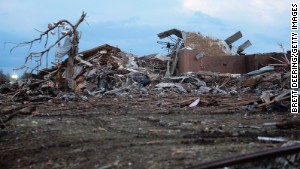 Scam artists target tornado victims
Scam artists target tornado victims 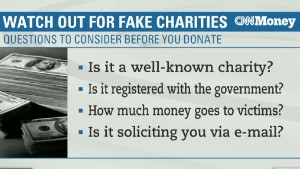 Beware fake Boston bombing charities
Beware fake Boston bombing charities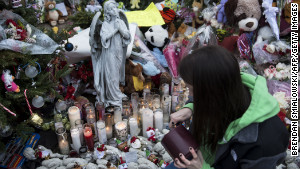 Official: Scam allegations are shocking
Official: Scam allegations are shocking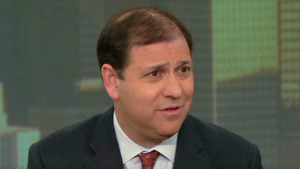 Can charities be trusted to do good?
Can charities be trusted to do good?The nation’s 50 worst charities have paid their solicitors nearly $1 billion over the past 10 years that could have gone to charitable works.
Until today, no one had tallied the cost of this parasitic segment of the nonprofit industry or traced the long history of its worst offenders.
Among the findings:
— The 50 worst charities in America devote less than 4% of donations raised to direct cash aid. Some charities gave even less. Over a decade, one diabetes charity raised nearly $14 million and gave about $10,000 to patients. Six spent no cash at all on their cause.
— Even as they plead for financial support, operators at many of the 50 worst charities have lied to donors about where their money goes, taken multiple salaries, secretly paid themselves consulting fees or arranged fund-raising contracts with friends. One cancer charity paid a company owned by the president’s son nearly $18 million over eight years to solicit funds. A medical charity paid its biggest research grant to its president’s own for-profit company.
— Some nonprofits are little more than fronts for fund-raising companies, which bankroll their startup costs, lock them into exclusive contracts at exorbitant rates and even drive the charities into debt. Florida-based Project Cure has raised more than $65 million since 1998, but every year has wound up owing its fundraiser more than what was raised. According to its latest financial filing, the nonprofit is $3 million in debt.
— To disguise the meager amount of money that reaches those in need, charities use accounting tricks and inflate the value of donated dollar-store cast-offs – snack cakes and air fresheners – that they give to dying cancer patients and homeless veterans.
Over the past six months, the Times and CIR called or mailed certified letters to the leaders of Kids Wish Network and the 49 other charities that have paid the most to solicitors.
Most declined to answer questions about their programs or would speak only through an attorney.
Approached in person, one charity manager threatened to call the police; another refused to open the door. A third charity’s president took off in his truck at the sight of a reporter with a camera.
Kids Wish has hired Melissa Schwartz, a crisis management specialist in New York City who previously worked for the federal government after the 2010 BP oil spill.
Schwartz said Kids Wish hires solicitors so its staff can focus on working with children, not on raising donations. According to its 2011 IRS filing, the charity has 51 employees. Schwartz also said donors who give directly to the charity instead of in response to solicitations ensure that 100% of their pledge will be spent granting wishes.
She declined to answer additional questions about Kids Wish’s fund-raising operations, saying the charity “is focused on the future.”
Charity operators who would talk defended their work, saying raising money is expensive especially in tough economic times.
“No parent has ever turned me down for assistance because we got our money from a telemarketer,” said David Thelen, who runs the Committee for Missing Children in Lawrenceville, Georgia. The charity is No. 13 on the Times/CIR list.
Identifying the 50 worst
To identify America’s 50 worst charities, the Times and CIR pieced together tens of thousands of pages of public records collected by the federal government and 36 states. Reporters started in California, Florida and New York, where regulators require charities to report results of individual fund-raising campaigns.
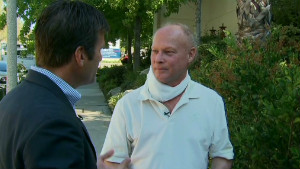 Fundraising company under investigation
Fundraising company under investigation Berger: Do research before donating
Berger: Do research before donating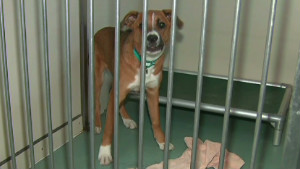 Company profits from charity donations
Company profits from charity donations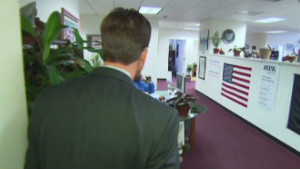 Should charity marketers be avoided?
Should charity marketers be avoided?The Times and CIR used those records to flag a specific kind of charity: those that pay for-profit corporations to raise the vast majority of their donations year in and year out.
Search for charities that have been disciplined
The effort identified hundreds of charities that run donation drives across the country and regularly give their solicitors at least two-thirds of the take. Experts say good charities should spend about half that much – no more than 35 cents to raise a dollar.
For the worst charities, writing big checks to telemarketers isn’t an anomaly. It’s a way of life.
The Times and CIR charted each charity’s performance over the past decade and ranked them based on the total donations diverted to fundraisers, arriving at the 50 worst charities. By this measure, Kids Wish tops the list.
Tracking donations diverted to fund-raising is just one way to rate a charity’s performance. But experts called the rating fair and said it would provide a unique resource to help donors avoid bad charities.
Doug White, one of the nation’s foremost experts on the ethics of charity fund-raising, dismisses the argument made by charities that without telemarketers they would have no money.
“When you weigh that in terms of values, of what the charity is supposed to be doing and what the donor is being told in the process, the house comes tumbling down,” said White, who teaches in Columbia University’s fund-raising management master’s degree program.
Share your tips on suspicious charities
Collectively the 50 worst charities raised more than $1.3 billion over the past decade and paid nearly $1 billion of that directly to the companies that raise their donations.
If that money had gone to charity, it would have been enough to build 20,000 Habitat for Humanity homes, buy 7 million wheelchairs or pay for mammograms for nearly 10 million uninsured women.
Instead it funded charities like Youth Development Fund.
The Tennessee charity, which came in at No. 12, has been around for 30 years. Over the past decade it has raised nearly $30 million from donors by promising to educate children about drug abuse, health and fitness.
About 80% of what’s donated each year goes directly to solicitation companies.
Most of what’s left pays for one thing: scuba-diving videos starring the charity’s founder and president, Rick Bowen.
Bowen’s charity pays his own for-profit production company about $200,000 a year to make the videos. Then the charity pays to air Rick Bowen Deep-Sea Diving on a local Knoxville station. The program makes no mention of Youth Development Fund.
In its IRS tax filings, the charity reports that its programming reaches “an estimated audience of 1.3 million.”
But, according to the station manager, the show attracts about 3,600 viewers a week.
Bowen, who runs the charity out of his Knoxville condo, declined to be interviewed. He defended the practice of hiring his own company with the public’s donations.
“We just happened to be the low bidder,” he said.
Good vs. bad charities
America’s worst charities look nothing like Habitat for Humanity, Boys and Girls Clubs or thousands of other charities, large and small, that are dedicated to helping the sick and needy.
• Do you work for a paid fundraiser?
• How much of my donation actually goes to charity?
• Will any local programs directly benefit? If so, how?
• What is the website address of the charity?
Well-run charities rely on their own staff to raise money from a variety of sources. They spend most of their donations on easy-to-verify activities, whether it’s running soup kitchens, supporting cancer research, raising awareness about drunken driving or building homes for veterans.
The Times/CIR list of worst charities, meanwhile, is littered with organizations that exhibit red flags for fraud, waste and mismanagement.
Thirty-nine have been disciplined by state regulators, some as many as seven times.
Eight of the charities have been banned in at least one state.
One was shut down by regulators but reopened under a new name.
A third of the charities’ founders and executives have put relatives on the payroll or the board of directors.
How states failed to regulate charity scams
For eight years, American Breast Cancer Foundation paid Joseph Wolf’s telemarketing company to generate donations.
His mother, Phyllis Wolf, had founded the Baltimore-based charity and was its president until she was forced to resign in 2010.
While she ran the charity, her son’s company, Non Profit Promotions, collected $18 million in telemarketing fees.
Phyllis Wolf left the charity after the payments to her son attracted media attention in 2010. The charity has since stopped using telemarketers, including Joseph Wolf’s.
Phyllis and Joseph Wolf did not respond to several calls seeking comment.
How to help: CNN’s Impact Your World
The nation’s worst charities are large and small. Some are one-person outfits operating from run-down apartments. Others claim hundreds of employees and a half-dozen locations around the country. One lists a UPS mail box as its headquarters address.
Several play off the names of well-known organizations, confusing donors.
Among those on the Times/CIR list are Kids Wish Network, Children’s Wish Foundation International and Wishing Well Foundation. All of the names sound like the original, Make-A-Wish, which does not hire professional telemarketers.
Make-A-Wish officials say they’ve spent years fielding complaints from people who were solicited by sound-a-like charities.
“While some of the donations go elsewhere, all the bad public relations that comes with telemarketing seems to come to us,” said Make-A-Wish spokesman Paul Allvin.
Donors who answer calls from the 50 worst charities hear professionally honed messages, designed to leverage popular causes and hide one crucial fact: Almost nothing goes to charity.
When telemarketers for Kids Wish call potential donors, they open with a name you think you’ve heard before.
Then they ask potential donors to “imagine the heartbreak of losing a child to a terminal illness,” according to scripts filed with North Carolina regulators in 2010.
Kids Wish, the callers say, wants to fulfill their wishes “while they are still healthy enough to enjoy them.”
They leave out the fact that most of the charity’s good deeds involve handing out gift cards to hospitalized children and donated coloring books and board games to healthy kids around the country. And they don’t mention the millions of dollars spent on salaries and fund-raising every year.
The biggest difference between good charities and the nation’s worst is the bottom line.
Every charity has salary, overhead and fund-raising costs.
But several watchdog organizations say charities should spend no more than 35% of the money they raise on fund-raising expenses.
The Make-A-Wish Foundation of Central and North Florida is one of dozens of Make-A-Wish chapters across the country.
Last year, it reported raising $3.1 million cash and spent about 60% of that — $1.8 million — granting wishes.
The same year, Kids Wish raised $18.6 million, its tax filing shows. It spent just $240,000 granting wishes — 1% of the cash raised.
Read a full version of this report
Go Here for More on Charity Ratings
By Ryan Jaslow /

MANDEL NGAN/AFP/Getty Images
Hand-washing is a daily routine — for most of us — but according to a new study, only a handful of people are properly scrubbing their paws.
Michigan State University researchers camped out in public restrooms, and found only 5 percent of people properly washed their hands long enough to kill infection-causing germs and bacteria.
While health officials often remind people to make sure they’re washing their hands correctly, especially around flu season, the low statistics shocked even the study authors.
“These findings were surprising to us because past research suggested that proper hand washing is occurring at a much higher rate,” lead investigator Carl Borchgrevink, an associate professor of hospitality business at Michigan State University in East Lansing, said in a statement.
Hand-washing saves lives, according to the Centers for Disease Control and Prevention. Proper technique can cut cold and flu risk, prevent the spread of foodborne illnesses and other infections in close settings like cruise ships and hospitals.
The “right way to wash your hands” is to wet your hands with clean, running water (warm or cold) and apply soap. Rub them together to make a lather while scrubbing them well, making sure you get the backs of the hands, between the fingers and under the nails. Keep this up for 20 seconds — the CDC recommends singing the “Happy Birthday” song twice — and after, rinse under running water, before drying with a clean towel or air dryer.
Twelve researchers were deployed undercover to public restrooms located across a college town for the study. They observed more than 3,700 people using public restrooms, and found 95 percent of them were cutting corners. Thirty-three percent of people didn’t use soap, while 10 percent skipped hand-washing entirely. The average hand-washing time was 6 seconds, far below the CDC’s recommended duration.
Men were much worse than women, the researchers observed. Fifteen percent of men didn’t wash at all, compared with 7 percent of women. When they did wash, 50 percent of men used soap, compared to 79 percent of women.
Other factors may have contributed to these rates: People were more likely to skip hand-washing if the sink was dirty, and were more likely to wash earlier in the day, which suggests people out for a nighttime meal or drinks may not be as vigilant. Signs telling people to wash their hands were effective, the researchers also found, with people less likely to wash in the absence of a sign.
The study was published in the June issue of the Journal of Environmental Health.
Borchgrevink, who used to work as a chef and restaurant manager before entering academia, said restaurant owners should be just as worried about the new findings as consumers.
“Imagine you’re a business owner and people come to your establishment and get foodborne illness through the fecal-oral route — because people didn’t wash their hands — and then your reputation is on the line,” he said. “You could lose your business.”

In January, when flu season was rampant in the U.S., Dr. Elaine Larson, associate dean of research at Columbia University School of Nursing, told CBSNews.com that the biggest mistake people make when washing is “not covering the surfaces most likely to touch, which are the fingertips,” she said. “People rub their palms together, when fingertips are the most critical.”
If you don’t have soap or clean running water available, the CDC recommends an alcohol-based hand sanitizer — at least 60 percent alcohol — applied to the palm of one hand, before rubbing both hands together all over the surfaces of your hands and fingers until dry.
But, the agency points out the sanitizers do not eliminate all germs and are not as effective when your hands are visibly dirty.
By Farhad Manjoo Posted Sunday, June 9, 2013, at 7:44 PM

Edward Snowden sounds like a thoughtful, patriotic young man, and I’m sure glad he blew the whistle on the NSA’s surveillance programs. But the more I learned about him this afternoon, the angrier I became. Wait, him? The NSA trusted its most sensitive documents to this guy? And now, after it has just proven itself so inept at handling its own information, the agency still wants us to believe that it can securely hold on to all of our data? Oy vey!
According to the Guardian, Snowden is a 29-year-old high school dropout who trained for the Army Special Forces before an injury forced him to leave the military. His IT credentials are apparently limited to a few “computer” classes he took at a community college in order to get his high school equivalency degree—courses that he did not complete. His first job at the NSA was as a security guard. Then, amazingly, he moved up the ranks of the United States’ national security infrastructure: The CIA gave him a job in IT security. He was given diplomatic cover in Geneva. He was hired by Booz Allen Hamilton, the government contractor, which paid him $200,000 a year to work on the NSA’s computer systems.
Let’s note what Snowden is not: He isn’t a seasoned FBI or CIA investigator. He isn’t a State Department analyst. He’s not an attorney with a specialty in national security or privacy law.
Instead, he’s the IT guy, and not a very accomplished, experienced one at that. If Snowden had sent his résumé to any of the tech companies that are providing data to the NSA’s PRISM program, I doubt he’d have even gotten an interview. Yes, he could be a computing savant anyway—many well-known techies dropped out of school. But he was given access way beyond what even a supergeek should have gotten. As he tells the Guardian, the NSA let him see “everything.” He was accorded the NSA’s top security clearance, which allowed him to see and to download the agency’s most sensitive documents. But he didn’t just know about the NSA’s surveillance systems—he says he had the ability to use them. “I, sitting at my desk, certainly had the authorities [sic] to wiretap anyone from you or your accountant to a federal judge to even the president if I had a personal email,” he says in a video interview with the paper.
Because Snowden is now in Hong Kong, it’s unclear what the United States can do to him. But watch for officials to tar Snowden—he’ll be called unpatriotic, unprofessional, treasonous, a liar, grandiose, and worse. As in the Bradley Manning case, though, the more badly Snowden is depicted, the more rickety the government’s case for surveillance becomes. After all, they hired him. They gave him unrestricted access to their systems, from court orders to PowerPoint presentations depicting the crown jewels of their surveillance infrastructure. (Also of note: They made a hideous PowerPoint presentation depicting the crown jewels of their surveillance infrastructure—who does that? I’ve been reading a lot of Le Carré lately, and when I saw the PRISM presentation, I remembered how Le Carré’s veteran spy George Smiley endeavored to never write down his big secrets. Now our spies aren’t just writing things down—they’re trying to make their secrets easily presentable to large audiences.)
The worst part about the NSA’s surveillance is not its massive reach. It’s that it operates entirely in secret, so that we have no way of assessing the sophistication of its operation. All we have is the word of our politicians, who tell us that they’ve vetted these systems and that we should blindly trust that the data are being competently safeguarded and aren’t vulnerable to abuse.
Snowden’s leak is thus doubly damaging. The scandal isn’t just that the government is spying on us. It’s also that it’s giving guys like Snowden keys to the spying program. It suggests the worst combination of overreach and amateurishness, of power leveraged by incompetence. The Keystone Cops are listening to us all.
Without a doubt, V2 and Green Smoke are the best electronic cigarettes on the market.
Use this promo code to get 10% off on all V2 products and 15% off any starter kit.